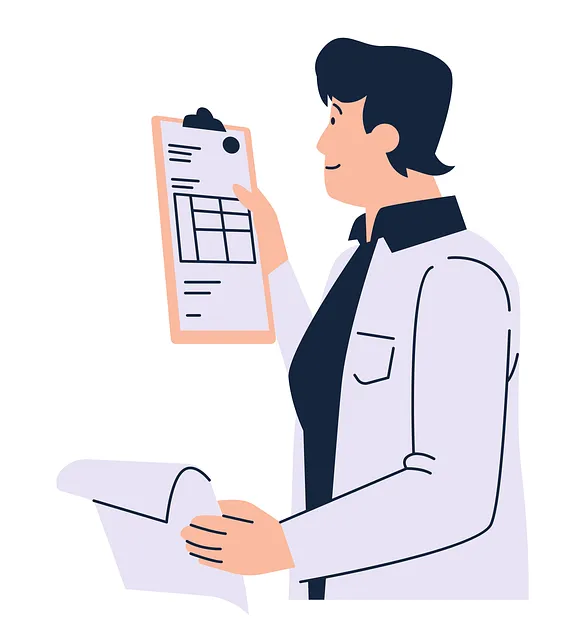Understanding and managing your auto insurance premium involves several strategic steps. Firstly, evaluate your driving history and habits – a clean record with no recent claims can significantly reduce costs. Next, consider your vehicle make and model, opting for safer, modern cars with good safety ratings to lower premiums. Regularly compare quotes from multiple insurers, scrutinizing policy details and available discounts. Leverage bundled policies and specific organization membership discounts, plus raise your deductible (while maintaining an emergency fund). Combine auto insurance with home and life insurance for substantial savings. Lastly, stay proactive by regularly reviewing your policy against market offers and understanding your coverage to avoid unnecessary costs.
Looking to slash your auto insurance premium without sacrificing coverage? Understanding how your policy costs are calculated is the first step. In this guide, we break down the key factors influencing rates, from driving habits and vehicle type to bundling policies. Learn how to evaluate your coverage needs, leverage discounts, and shop around for the best deals. Discover actionable strategies on how to lower your auto insurance premium and save money without compromising safety.
Understanding Auto Insurance Premiums: What Influences Cost

Auto insurance premiums, or the costs you pay for coverage, are influenced by a multitude of factors. Understanding these elements is key to knowing how to lower your auto insurance premium. One significant factor is your driving history and record. A clean driving history typically results in lower premiums because it demonstrates responsible driving behavior. Conversely, accidents, moving violations, or traffic infractions can increase your rates.
Another critical aspect is the type of vehicle you own. Safer, newer models with advanced safety features often come with discounted insurance rates. Conversely, older vehicles, especially those with higher repair costs, may lead to pricier premiums. Additionally, where you live and drive matters. Urban areas with heavier traffic and a higher risk of accidents usually translate to higher insurance costs compared to rural or less congested regions.
Evaluating Your Driving Habits and History

Evaluating your driving habits and history is a crucial step in determining how to lower your auto insurance premium. Insurers consider various factors, including your claim record, years of driving experience, and frequency of accidents or tickets, when calculating rates. If you have a clean driving record with no recent claims, you’re likely to pay less for coverage. Additionally, demonstrating safe driving behavior through defensive driving courses or maintaining a consistent, low-risk profile can result in significant savings on your policy.
Regularly reviewing and comparing your insurance options is another effective way to manage costs. As your personal circumstances change—for instance, if you complete a defensive driving course or switch vehicles—your insurance needs may also evolve. Keeping your insurer informed about these changes ensures they can adjust your policy accordingly, potentially offering lower premiums based on updated data and risk assessments.
The Role of Vehicle Make and Model in Premium Calculation

Vehicle make and model play a significant role in determining your auto insurance premium. Insurers consider certain car types as safer or riskier based on their design, safety features, and historical data on claims. For example, modern cars with advanced airbag systems, anti-lock brakes, and electronic stability control may qualify for lower premiums due to their enhanced safety capabilities. On the other hand, older models or those known for higher repair costs or frequent accidents can lead to higher insurance rates.
To lower your auto insurance premium, consider opting for a safer vehicle, preferably one that has a good safety rating from organizations like the Insurance Institute for Highway Safety (IIHS). Additionally, maintaining and regularly servicing your car can help prevent accidents and reduce claims, ultimately contributing to a lower premium. Choosing a less risky vehicle is a practical step towards managing your insurance costs effectively.
Shop Around: Comparing Quotes from Multiple Providers

Comparing quotes from multiple providers is a straightforward yet effective way to lower your auto insurance premium. Take the time to research and gather quotes from several companies, as rates can vary significantly. Consider using online platforms or dedicated comparison tools that allow you to input your information once and receive offers from numerous insurers. This saves you from the hassle of contacting each company individually.
When shopping around, don’t just look at the base price. Analyze the policy details, coverage limits, deductibles, and any applicable discounts. You might find that a slightly higher premium from a reputable company offers more comprehensive protection with better claims service, ultimately saving you money in the long run.
Utilize Discounts Offered by Insurance Companies

To lower your auto insurance premium, one effective strategy is to take advantage of the discounts offered by insurance companies. Many insurers provide various savings options that can significantly reduce costs. For example, good students, safe drivers, and members of certain organizations often qualify for discounts. Bundling your auto insurance with home or life insurance from the same provider can also lead to substantial savings. Additionally, maintaining a clean driving record without accidents or violations will almost always result in lower rates.
Remember that each insurance company has its own set of eligible discounts, so it’s essential to shop around and compare offers. By combining these savings opportunities, you can substantially reduce your auto insurance costs. How to Lower Your Auto Insurance Premium is not just about finding the cheapest option; it’s about getting covered affordably while ensuring peace of mind on the road.
Consider a Higher Deductible for Reduced Coverage Costs

When looking for ways to lower your auto insurance premium, one effective strategy is to consider a higher deductible. The deductible is the amount you pay out-of-pocket before your insurance kicks in. By opting for a higher deductible, you can significantly reduce the overall cost of your coverage. This approach appeals to those who are more comfortable with a slightly larger financial burden upfront, as it minimizes the insurance company’s risk and, consequently, their premiums.
This method allows you to customize your policy according to your budget and risk tolerance. It’s a direct way to take control of your auto insurance expenses. Remember, while a higher deductible can lower your premium, ensure you have sufficient savings or an emergency fund to cover unexpected repairs or accidents without financial strain.
Bundle Policies to Save on Auto and Other Insurance Expenses

Combining your auto insurance with other types of insurance policies can be a great way to lower your overall expenses and save money on your auto insurance premium. Many insurance companies offer bundle packages that include auto, home, and even life insurance together. By bundling these policies, you not only simplify your coverage but also often receive significant discounts. This is because insurers are able to assess your risk profile more accurately when insuring multiple aspects of your life, leading to reduced costs for you.
When considering how to lower your auto insurance premium, exploring bundle options should be at the top of your list. These packages can offer substantial savings while ensuring that all your insurance needs are met under one roof. It’s a win-win situation—you save money and gain convenience by dealing with a single provider for multiple essential policies.
Evaluate Your Coverage Needs: Essential vs. Optional Add-ons

When evaluating car insurance packages, understanding your coverage needs is crucial to lower your auto insurance premium. Start by distinguishing between essential and optional add-ons. Essential coverages like liability, collision, and comprehensive are mandatory and protect against significant financial losses in the event of an accident or theft. Optional add-ons, on the other hand, such as personal injury protection or roadside assistance, offer additional benefits but may not be necessary for everyone. By carefully considering which optional coverages align with your lifestyle and budget, you can significantly reduce your insurance costs.
To optimize your policy, assess your driving habits, vehicle age, and safety features. For instance, if you’re a safe driver with an older vehicle equipped with anti-theft devices, you might qualify for lower rates due to reduced risk factors. Comparing quotes from multiple insurers who cater to your specific needs can also help you find the best balance between coverage and affordability.
Stay Informed and Review Policies Regularly to Avoid Unnecessary Spending

Staying informed and proactive about your car insurance is key to lowering your auto insurance premium. Regularly review your policy and compare it with other offers in the market. Insurance rates can fluctuate based on various factors such as your driving record, vehicle make and model, and location. By keeping an eye on these changes, you can adjust your coverage or switch providers to find a better deal. Many companies offer discounts for good drivers, safe vehicles, or bundle services like home and auto insurance. Staying informed allows you to take advantage of these savings.
Moreover, understanding what your policy covers and what doesn’t is essential. You might be paying for coverage you don’t need, which could increase your premium unnecessarily. Reviewing policies regularly enables you to make informed decisions about necessary coverages and potential adjustments. This proactive approach ensures you’re not overpaying for car insurance.



